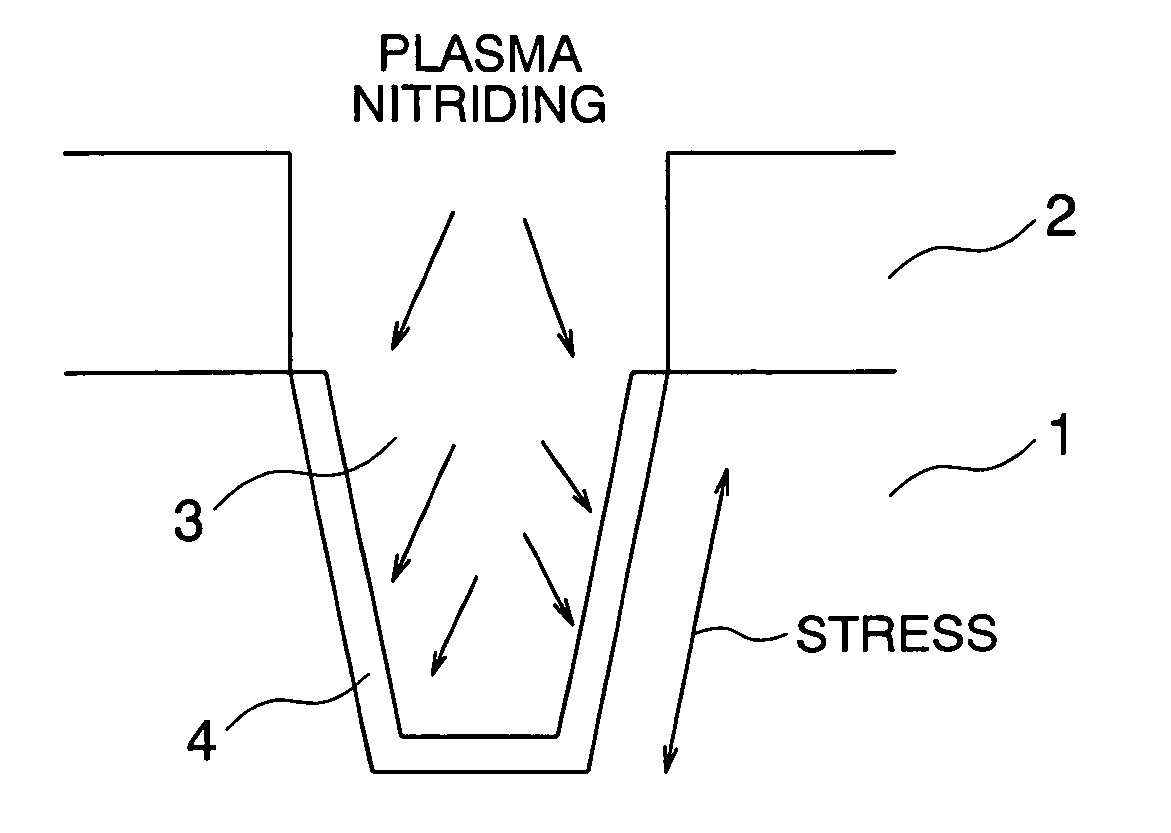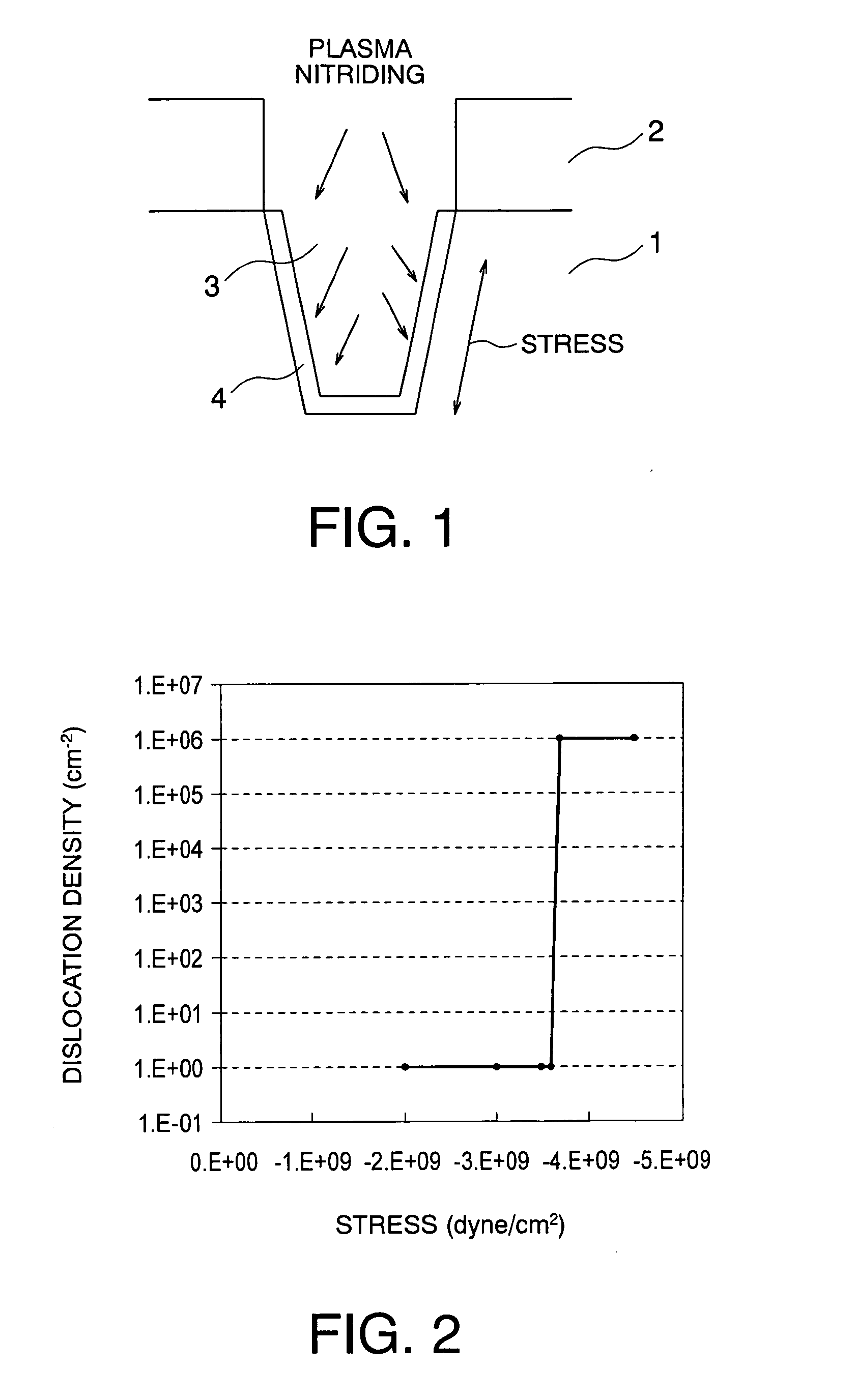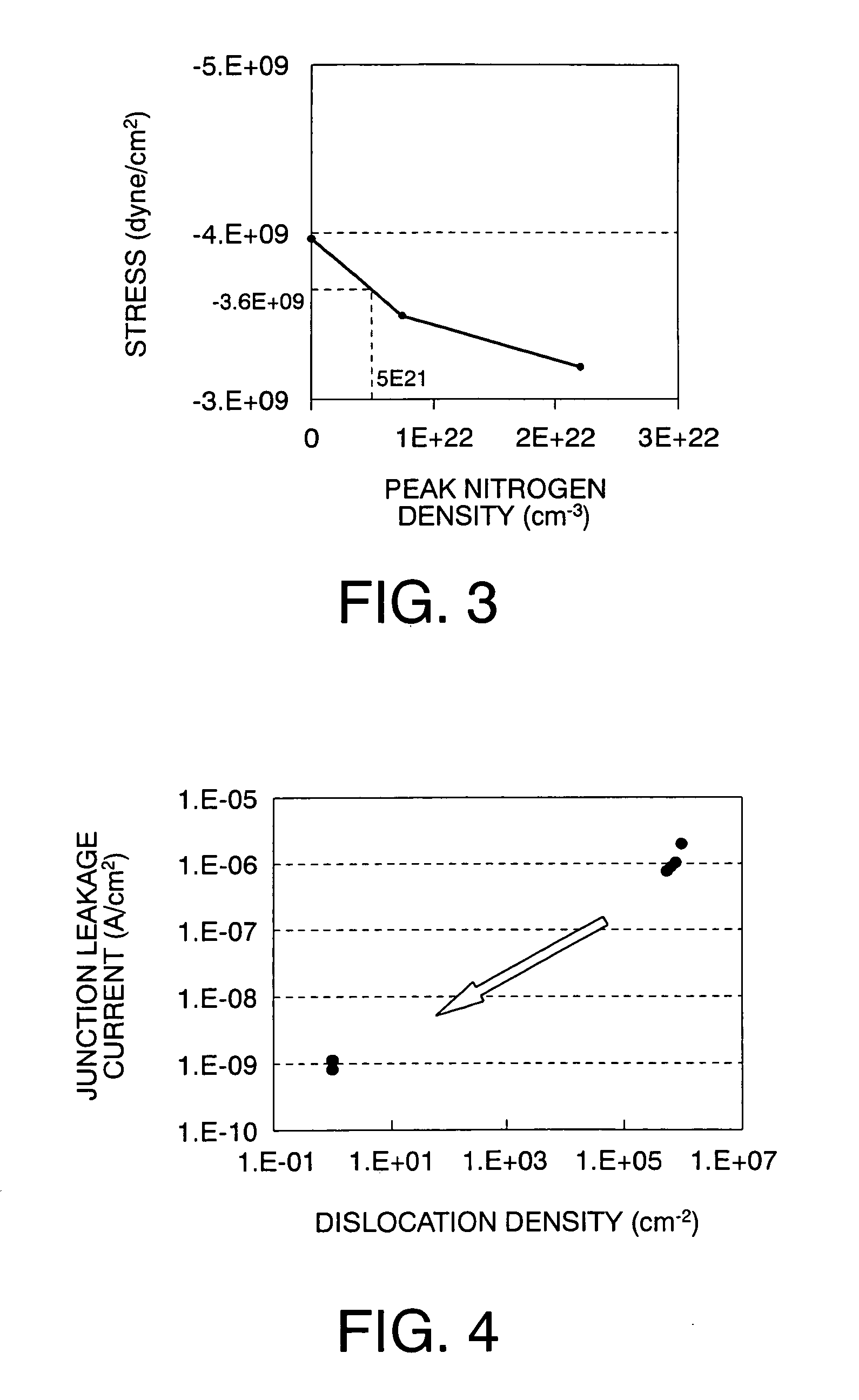Method for producing semiconductor device
- Summary
- Abstract
- Description
- Claims
- Application Information
AI Technical Summary
Benefits of technology
Problems solved by technology
Method used
Image
Examples
embodiment 1
[0024] Embodiment 1 will now be described with reference to FIGS. 1 to 7. As shown in FIG. 1, a nitride film 2 is grown on a silicon substrate 1, and a trench 3 is formed by etching. The inner walls of the trench 3 are thermally oxidized to form inner-wall oxide films 4 each having a thickness of 5 to 20 nm. Then, the inner-wall oxide films 4 are partially nitrided by plasma to produce oxynitride films. A plasma oxide film is formed in the trench by plasma oxidation so as to be embedded in the entire trench. As a result, an isolation region for isolating elements from each other is produced. The peak nitrogen concentration in each oxynitride film is controlled to be optimized. By optimizing the peak nitrogen concentration, it is possible to reduce a stress and thus to suppress the occurrence of the dislocation defect in the silicon substrate. It is also possible to suppress a threshold voltage shift due to the positive charge of nitrogen.
[0025] Nitrogen in the oxynitride film funct...
embodiment 2
[0038] Embodiment 2 will be described below with reference to FIGS. 8 to 11. In Embodiment 1, each of the inner-wall oxide films 4 shown in FIG. 1 is nitrided by plasma to produce an oxynitride film. However, in this Embodiment 2, each of the inner-wall oxide films 4 is heat-treated in a nitrogen-containing atmosphere to produce an oxynitride film.
[0039] Each oxide film having a thickness of 5 to 20 nm is heat-treated in an atmosphere containing, for example, NH3, NO, or N2O to produce an oxynitride film. Heat-treating for nitriding the oxide film provides a broad distribution of the nitrogen concentration compared with plasma nitriding. The nitrogen concentration is increased at a Si—SiO2 interface. Thus, the peak nitrogen concentration is reduced and is in the range of 3E21 to 1E22 (cm−3). This concentration is achieved by heat-treating in NH3 at 950° C. for 60 seconds. In NO atmosphere, the concentration is achieved by heat-treating at 950° C. for 40 seconds under a pressure of ...
PUM
 Login to View More
Login to View More Abstract
Description
Claims
Application Information
 Login to View More
Login to View More - R&D
- Intellectual Property
- Life Sciences
- Materials
- Tech Scout
- Unparalleled Data Quality
- Higher Quality Content
- 60% Fewer Hallucinations
Browse by: Latest US Patents, China's latest patents, Technical Efficacy Thesaurus, Application Domain, Technology Topic, Popular Technical Reports.
© 2025 PatSnap. All rights reserved.Legal|Privacy policy|Modern Slavery Act Transparency Statement|Sitemap|About US| Contact US: help@patsnap.com



